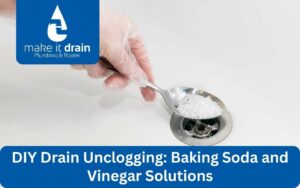Garbage disposals are integral to modern kitchens, streamlining waste management and keeping our sinks clear. However, when they start leaking, it can create a mess and lead to larger plumbing issues if not addressed promptly. Understanding why your garbage disposal is leaking and how to fix it is essential to maintaining a functional and hygienic kitchen.
Identifying the Source of the Leak
The first step in addressing a leaking garbage disposal is to identify where the leak is coming from. There are several common areas where leaks can occur:
1. The Sink Flange
The sink flange is where the disposal unit attaches to the bottom of the sink. If this seal is broken or worn out, it can cause water to drip from the top of the unit. This is often due to the putty drying out or the bolts loosening over time.
2. The Dishwasher Connection
If your disposal is connected to a dishwasher, the hose that links the two can become loose or cracked, leading to leaks.
3. The Drain Pipe
The drain pipe at the bottom or sides of the disposal can also be a source of leaks. This might be due to loose connections, worn-out gaskets, or cracks in the pipe itself.
4. The Unit’s Body
Cracks or holes in the body of the garbage disposal unit can also cause leaks. This is usually a sign of an aging unit that might need replacement.
Troubleshooting & Repairs
Once you’ve identified the source of the leak, you can begin troubleshooting:
1. Tighten Connections
If the leak is coming from a loose connection (sink flange, dishwasher hose, or drain pipe), try tightening the bolts or clamps. This can often resolve the issue without the need for replacement parts.
2. Replace Seals or Gaskets
If the leak is due to worn-out seals or gaskets, these components can usually be replaced easily. You can find replacement parts at most hardware stores.
3. Reseal the Sink Flange
If the leak is at the sink flange, resealing it with plumber’s putty can often fix the issue. This involves removing the garbage disposal, applying new putty, and reattaching the unit.
4. Inspect for Cracks
Check the body of the unit for any cracks or holes. If you find damage here, it’s likely time to replace the entire unit.
Preventing Future Leaks
Preventive maintenance is key to avoiding future leaks:
1. Regular Checks
Periodically check the connections and seals for signs of wear or loosening.
2. Avoid Hard Objects
Be cautious about what you put down the disposal. Hard objects can damage the unit and create cracks.
3. Keep it Clean
Regular cleaning can prevent build-up that can stress the unit.
4. Professional Inspection
If you’re unsure, getting a local plumber to inspect your unit can prevent small issues from becoming big problems.
When to Call a Professional
While many garbage disposal leaks can be fixed with basic DIY skills, there are times when it’s best to call a professional plumber. If you’re unable to identify the source of the leak, if the unit needs replacement, or if you’re uncomfortable making the repairs yourself, professional assistance is recommended.
In conclusion, a leaking garbage disposal can be more than just a nuisance. By understanding the common causes of leaks and how to address them, you can ensure your disposal continues to run smoothly and efficiently. Remember, when in doubt, don’t hesitate to call in a professional for help at Make it Drain we offer Garbage disposal repair & replacement.






